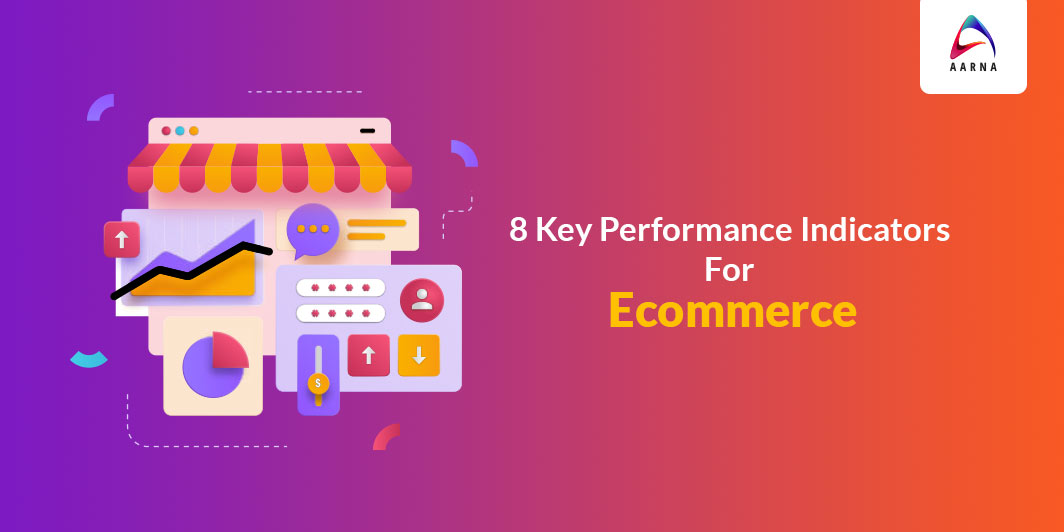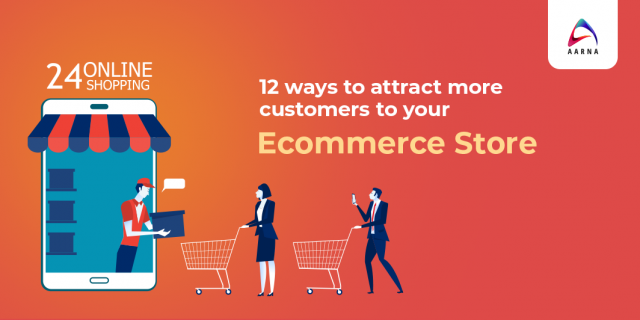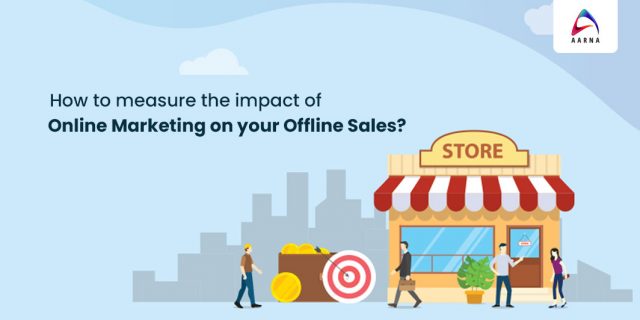
(This article reveals the eight most important ecommerce metrics you need to know to make smarter decisions when it comes to your online store. These are the same metrics used by the smartest ecommerce marketers in the world!)
Sales are obviously one of the most important metrics for any ecommerce business. However, there are a few KPIs that need to be tracked in order to understand your entire ecommerce business and not just those soothing sales figures. For example, profits and traffic both play an integral role in predicting an ecommerce business success. This article on ecommerce digital marketing analytics and ecommerce marketing KPIs by experts from a leading ecommerce digital marketing agency in India like ours can help you better understand your ecommerce business.
What are Ecommerce Marketing KPIs?
Ecommerce KPIs are metrics that help measure your online marketing efforts and output. They can be used for both short-term and long-term goals. A good ecommerce marketing KPI should be both qualitative and quantitative, based on the desired outcome. Qualitative metrics are subjective and based on user experience, whereas quantitative metrics are data-driven and more objective.
Understanding Customer Stages
The ecommerce marketing funnel is a series of steps that a customer goes through when they want to shop with you. There are four stages in the process, and each one must be effectively done. If any stage is missing or ineffective, then the chances of conversion become less. The first stage is at the top of the funnel, and the last stage is at the bottom of the funnel. The goal of most marketing efforts is to bring users through this funnel and get them to the last stage.
Ecommerce Funnel Stages:
- Acquisition
- Consideration
- Conversion
- Retention
How To Choose The Best Ecommerce KPIs For Your Business?
When starting a new ecommerce business, you must understand what KPIs to measure. These measurements will help you determine which marketing and advertising strategies are working well. There are many metrics that you can track in an ecommerce business. Some of the most common metrics include conversion rates, revenue per customer, average order value, and shopping cart abandonment rate. The conversion rate is the number of visits that resulted in a sale or purchase divided by the total number of visits. This metric can be tracked both online and offline to provide insight into whether your customers are converting on their visits or not. Leading ecommerce marketing agency India use these metrics to help their clients enjoy exponential ecommerce growth.
8 Must-Have Ecommerce KPI Metrics – Measure What Matters!
1. Add to Cart Rate
The Add to Cart rate is the percentage of shoppers who add the product to their cart, and it is an important metric for marketers who want to know how well their campaign is doing. Marketers need this metric to make sure they are investing in the right products and/or services. You can use A/B testing to see which product titles, descriptions, and images are most effective at driving a higher Add to Cart Rate. If you are trying to increase the number of shoppers adding an item to the cart, try using descriptive and emotional language in your product titles. You may also want to consider including a social proof image as this can influence whether or not people xdecide to purchase an item.
2. Cart Abandonment Rate
The cart abandonment rate is the percentage of people who added an item to their shopping cart but did not complete the purchase. It leaves a huge impact on revenue and the ecommerce company’s ability to grow. There are many reasons for abandoned carts, such as having a long shopping session, not finding the right item or even a change in priorities.
A high abandonment rate is inconvenient because it means that website retailers are losing potential revenue. According to the Baymard Institute, an ecommerce conversion research and consulting firm, on average, 71% of abandoned carts result in lost sales.
This rate can vary from one industry to another and from one company to another. For example, apparel companies have a much higher abandonment rate than electronics companies.
3. Cost Per Acquisition (CPA)
CPA is a metric that marketing agencies and advertisers use to measure the effectiveness of the different advertising methods. It is a cost per acquisition, where “acquisition” refers to any action taken by the customer or potential customer. To understand CPA, it is necessary to define what it stands for: Cost Per Acquisition. CPA is a metric that is used to measure the effectiveness of different advertising methods.
4. Return on Ad Spend (ROAS)
ROAS is the ratio of revenue generated per dollar spent on advertising. This metric provides a clear picture of how much value was generated by advertising. ROAS helps marketers measure how effective their campaigns are and whether they are getting a good return for their advertising investment. It also helps them determine the effectiveness of different advertising channels and strategies for future campaigns.
5. Customer Lifetime Value (CLTV)
Customer Lifetime Value is the value of a customer to the company over their lifetime.
The CLTV is calculated by multiplying the average order value by the repeat purchase rate. So, if we assume that an order is $150 and that a customer buys goods twice in six months, their CLTV will be $300. One of the key things to focus on when running an ecommerce store is the customer lifetime value. It is important to know who your customer is and how to maximize their value by providing them with a good experience. This will increase the chances of your customer coming back and buying from you again.
6. Average Order Value (AOV)
The AOV is a key metric for ecommerce stores, and it shows the average amount of money spent by an online shopper on a site. It is a good indicator of how much revenue they’re generating per customer. If you want to increase your AOV, you need to be able to increase the size of your shopping cart. There are lots of different ways that this can be achieved. For example, you can increase the number of items in people’s carts when they buy something from you, or you could offer discounts when they buy more items at once. If your store sells products in bulk, then it would make sense for them to buy all those products in one go too.
7. Orders Per Active Customers
Orders per Active Customer (OPAC) is an indicator of the number of items that a company sells on average to each customer. It is calculated by dividing the number of orders in a given period by the number of active customers in that period. The concept behind OPAC is simple: it’s just an indication of how many orders are made per customer. The actual value depends on how many customers buy products and how many orders they make, but we can see the trend over time. To calculate this metric for your ecommerce business, just divide your total number of orders in a given period by your total number of active customers in that same period. An average customer usually places more than one order in a year. This metric helps to determine if the products are popular or not. The higher the number, the better it is for a brand.
8. Ecommerce Conversion Rate
We all understand the importance of conversion rates. It is the only metric that matters in ecommerce, which tells you how many visitors buy your product after visiting your website.
Many factors have a significant effect on the conversion rate. For example, your product’s price, shipping costs, and return policies can increase or decrease the conversion rate. Other factors like social media and reputation also play a crucial role in increasing or decreasing conversion rates. The difference in conversion rates is not just based on external factors but also on internal ones. Internal factors may include website design, customer service, ease of purchase, and other such things that are related to your website and brand.
How Often Should I Check My Ecommerce Metrics?
You should be checking your Ecommerce metrics on a regular basis because they are the best way to see how your store is doing. You should check them every day, week, and month. There are various types of metrics that will be tracked. It is key to know what data is being collected by your analytics software and what it represents. These metrics will give you a clear idea of how well your ecommerce business has been doing, where it excels, and which areas need improvement. After all, when it comes to optimizing your online store for customer experience and conversion rates, data is everything.
Conclusion
Know Your Numbers! If you don’t know your numbers, you can’t manage your online store effectively. You need to know exactly how many visitors you are getting to your website, how many customers you are generating, how much product you are selling, and so forth. By using a variety of metrics (and knowing how to analyze those metrics), you can have a clear picture of the health of your online store and know with certainty where to focus your efforts.
Having to go through your ecommerce analytics dashboard, it is sometimes confusing to identify which channels are profitable and which ones are not. With new technologies and increased competition, the pressure is on. This means you have to engage someone who understands ecommerce marketing techniques to do the analysis for you. Our specifically designed solutions for ecommerce businesses will allow your business to step up to the plate and profit!
Aarna Systems is a seasoned ecommerce service provider in India. We help ecommerce businesses with retargeting, real-time customer experience analytics, Facebook, Instagram & Google Shopping ads. Now is the time to increase your ROAS & ecommerce sales with Aarna systems.

